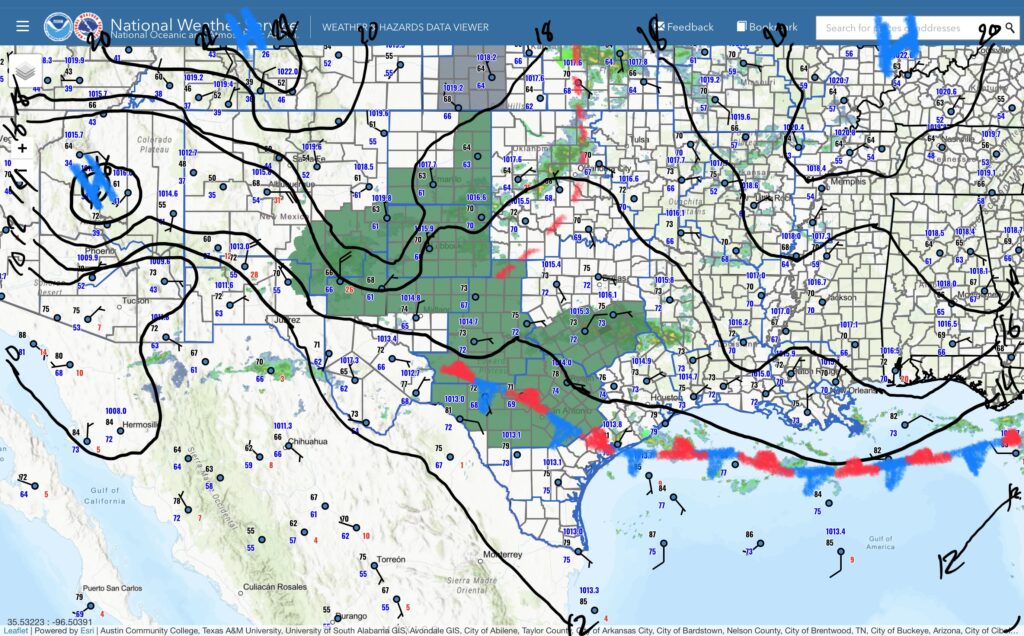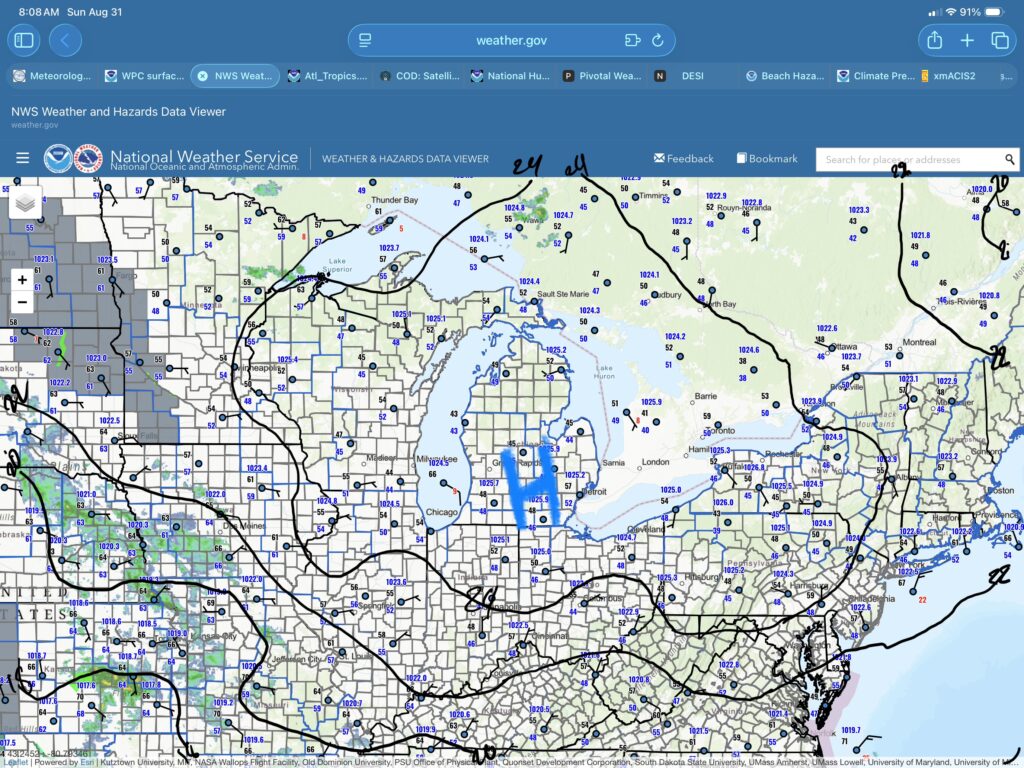
I am a meteorologist and a former youth leader at church…I have a lot to say on both subjects…and then some
I used the original software today (CamoStudio). It lacks a couple of features, that TopDirector has, that would be helpful. I had an encoder issue (TopDirector) on the previous two livestreams that ended the stream after a minute and a half. I may go back to creating Google Slides, if I continue to stream with CamoStudio. Here’s the livestream recording…
Websites used: Weather.gov (WPC/SPC/Local offices)
https://Tropicaltidbits.com
https://weather.cod.edu (College of DuPage)
https://beta.pivotalweather.com
https://weathernerds.org
Apps used: RadarScope
EverythingWeather
Web Links: https://ministry-weather.com
Facebook: recreational.weather
Instagram: recreational.weather
X: (South Texas and Lower Michigan Recreational Weather) @nmirecwx
As some may know, I have been trying to find a suitable solution to do live again. Well, maybe 2 solutions.
The first solution is the old solution with wireless HDMI and mouse pads. That gets rid of the extra wires and gives my wireless mouse something to move across.
The second solution is “TopDirector” app for iOS and iPadOS. I ran into it while reading an article about the Canon EOS R50 V. Which is a mirror-less camera that can livestream. Something my DSLR can do to a limited extent. Anyway, if you look at my YouTube page, I was able to do it, and the app lets my annotate things while I’m streaming. The app also lets me record directly too.
I may not have to do so much preproduction as well. Lately, I have been loading Google Slides with the screen captures of the things I want to show. Now, I just need to put the screen captures into photos or files, and I can preview and show them, just like I’m running a switcher. I’ll see if I have sometime tomorrow morning, after getting my granddaughter off to school, or during the afternoon, when the grandson is taking a nap. Either way, I may get back to live streaming the weather again! Definitely will continue to record it!
Okay, So things were running a little sluggish in my brain, especially when we were traveling daily on the Illinois River. We are now on the Mississippi and preparing to go on our next big jump to the Tennessee River, but first a little break. When we begin moving again, I’m hoping that my new work flow will get me to get out the three (3!) versions in fast enough time that I can get them out while we are moving down the Mississippi and on the Ohio River.
Websites used:
Weather.gov (WPC/SPC/Local offices),
Tropical Tidbits
College of DuPage Weather
Pivotal Weather (Beta site)
Weathernerds
Apps used: RadarScope, EverythingWeather
Facebook: recreational.weather
Instagram: recreational.weather
X.com: (South Texas and Lower Michigan Recreational Weather) @nmirecwx
Anyway, here are the three versions from this morning…
First and foremost, Let me take this time to wish my wife Happy Birthday!
With the electricity issues and watching the little grandkids, I’ve been out for the past week. I was trying to record, and fell short of time, so now that I’m back from birthday brunch for my wife, I’ll put a post up, and maybe later, I’ll put up a YouTube short/Tic Toc/Reel.
So for the National Stuff…



There is an upper low near the Upper Great Lakes, that give a low chance for showers and thunderstorms. There is also a stationary front, that thunderstorms were triggered from this morning in the Northern Plains, while the end of the main rain moves off this afternoon.
South Texas has the upper ridge, which remains in place, and north flow aloft. With the South east flow at the sfc, there is some destabilization. So for today, the best chance for showers and thunderstorms would be near the Middle Texas Coast.
On the satellite the Upper Great Lakes are clouded over with the convergence of system.

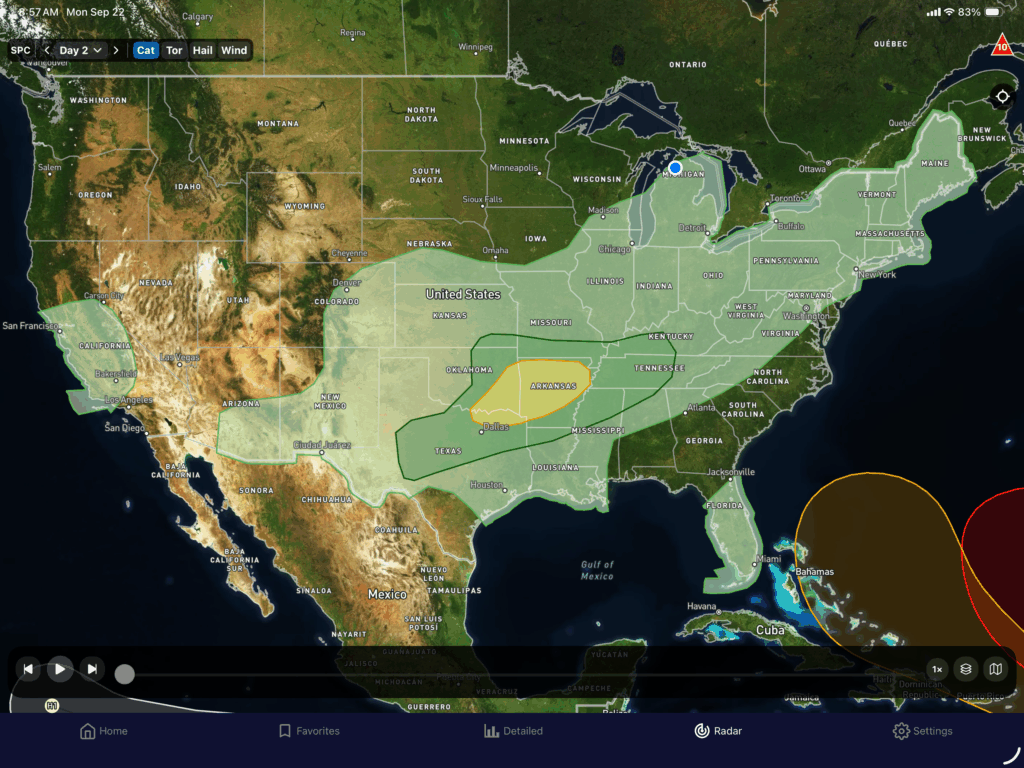

So Lower Michigan continues with the chance for showers and thunderstorms through Wednesday. With high pressure building into the region by Thursday.
For South Texas, a cold front (yes, I said it), looks to be making its way south from the Northern Plains today, and pushing through late Wednesday or Thursday. So the High temperatures for Today through Wednesday look like this…
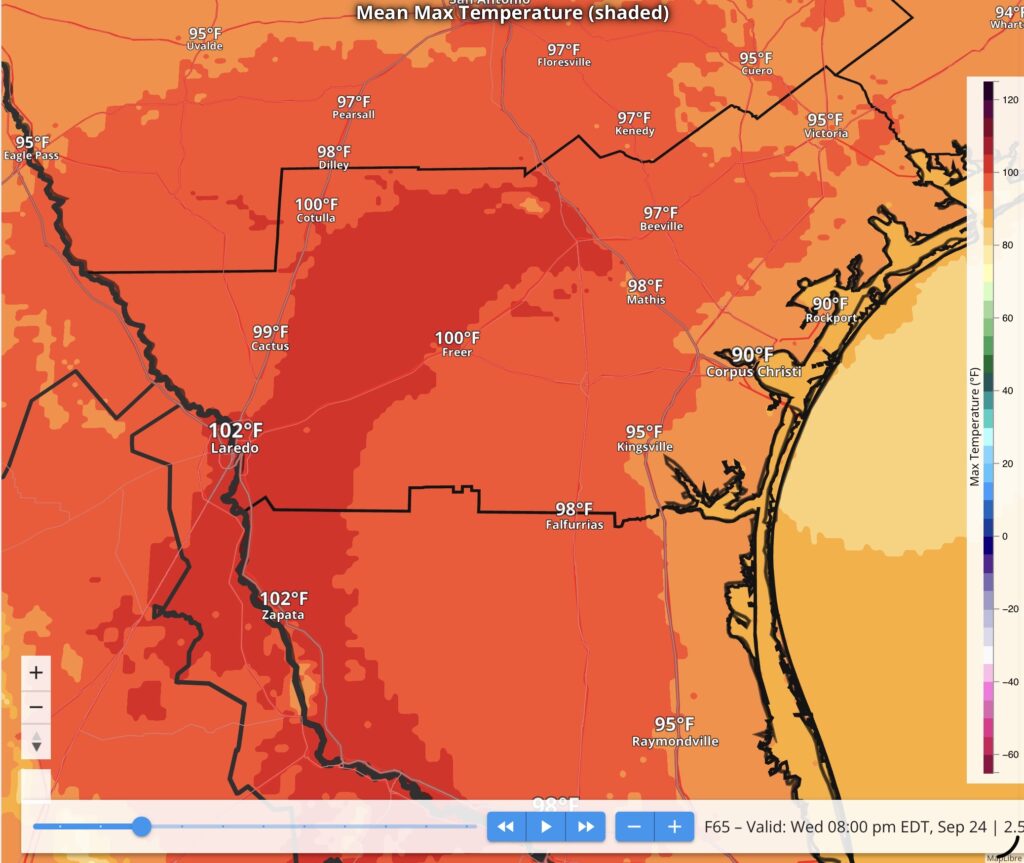
They will cool down to this…
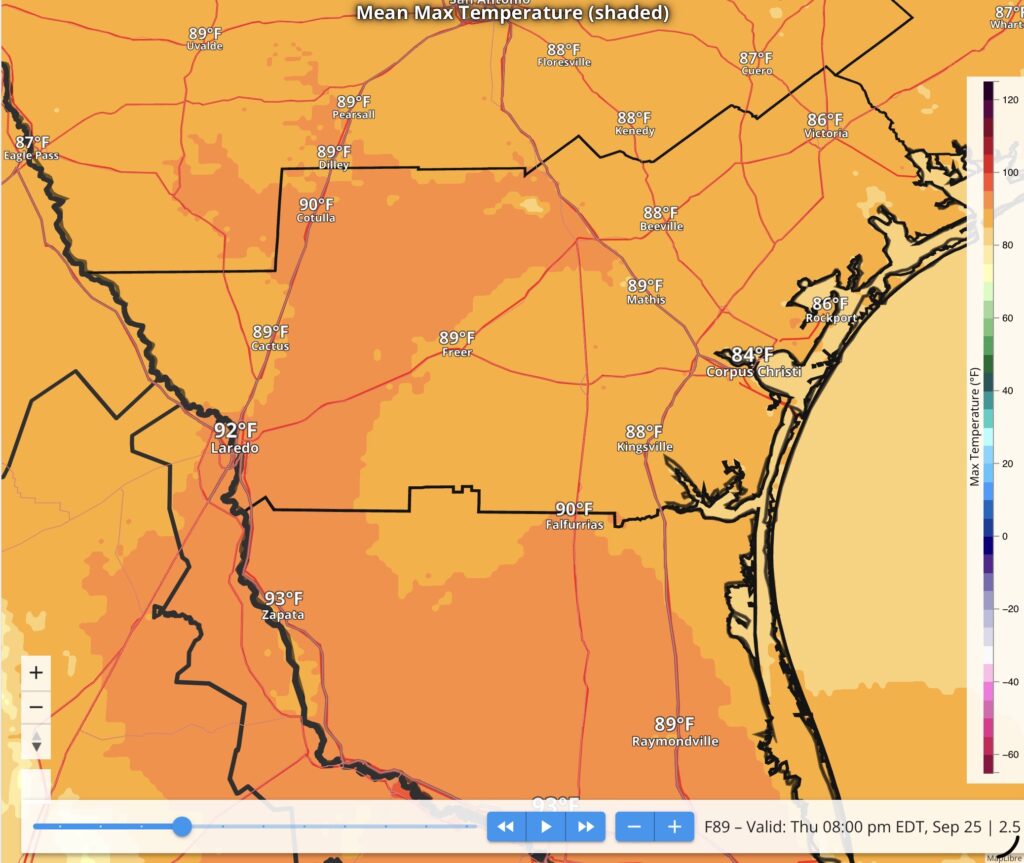
by Thursday. That’s about a 10ºF difference. So the first front looks to make it into the region finally.
The title comes from the latest Tropical outlook as we pass the peak of the Atlantic Hurricane season, then the switch get thrown.
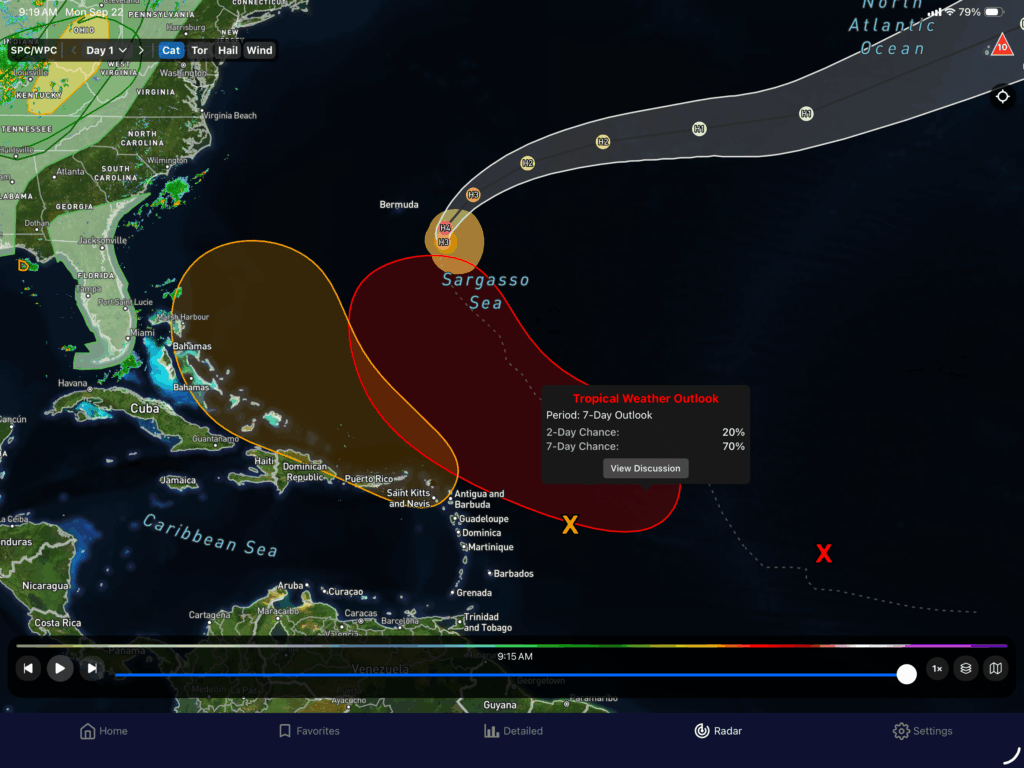
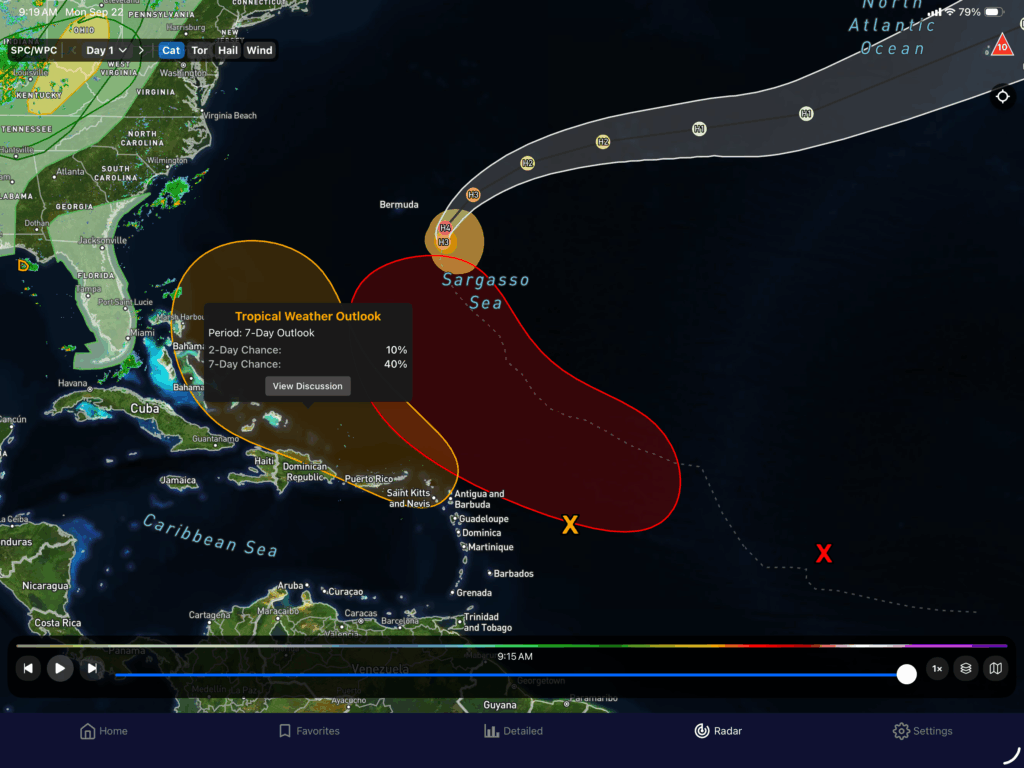
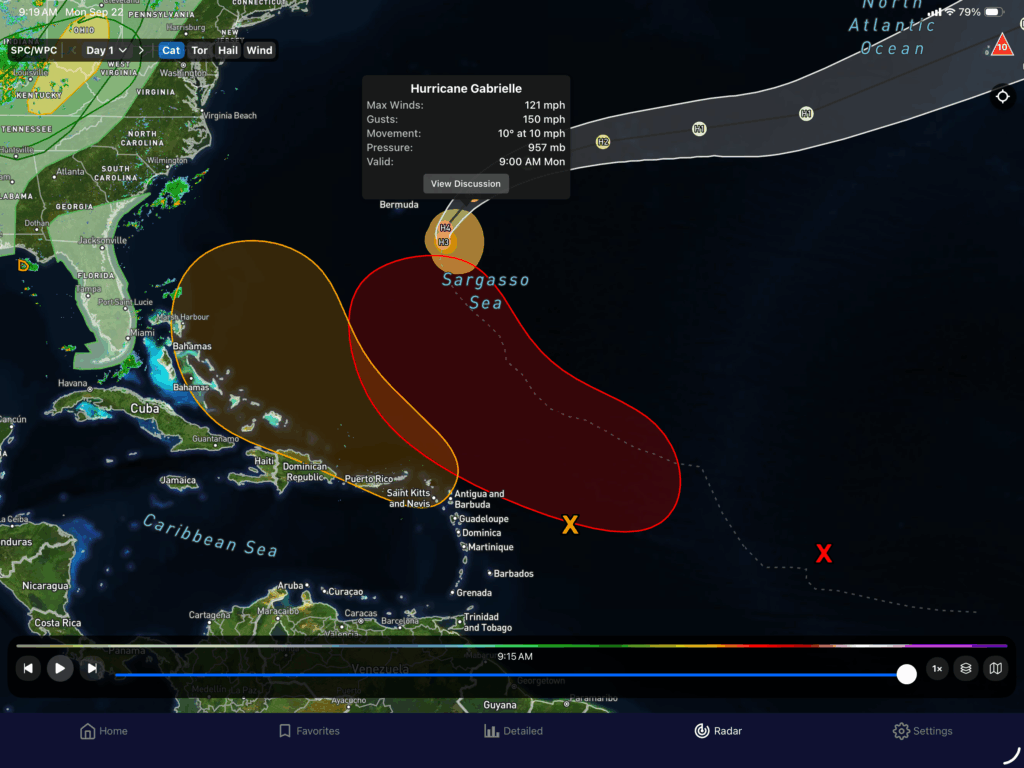
Hurricane Gabrielle is now a major hurricane (cat3 or better), its 120 mph sustained winds. It is move north, and is only expected to produce large swells and gusty winds near Bermuda. It could affect the Azores, and possibly Great Britain (but not as a tropical system).
There is a strong (red colored) wave that is expected to (70% chance) develop within the next 7 days, but a 20% chance in the next 2. This wave looks to follow Gabrielle.
The second one (the orange one) looks to develop near the Lesser Antilles or the Virgin Islands, and has a 40% chance for development over the next 7 days.
I have also been seeing that a sneaky wave (looking at the models) may develop 6-10 days out and could get into the Gulf. Also, and this is important, beware of the one model run disaster films. The GFS has been known to develop things and more likely it not happening, especially during this time of year. It does at front end, and it does it at the back end. Watch the NHC (or you can follow me since I tend to follow NHC), if anything develops.
Hi All! We are having some electrical issues fixed on the boat today, so I decided to type a post. I’m also thinking about redesigning my website so that you can get most of the information that I use for the briefings. Anyway, here’s what is going on this afternoon…
On the 500 mb chart, The Rex Block is still in place over the eastern states, and a Low is meandering out in the Northwest.
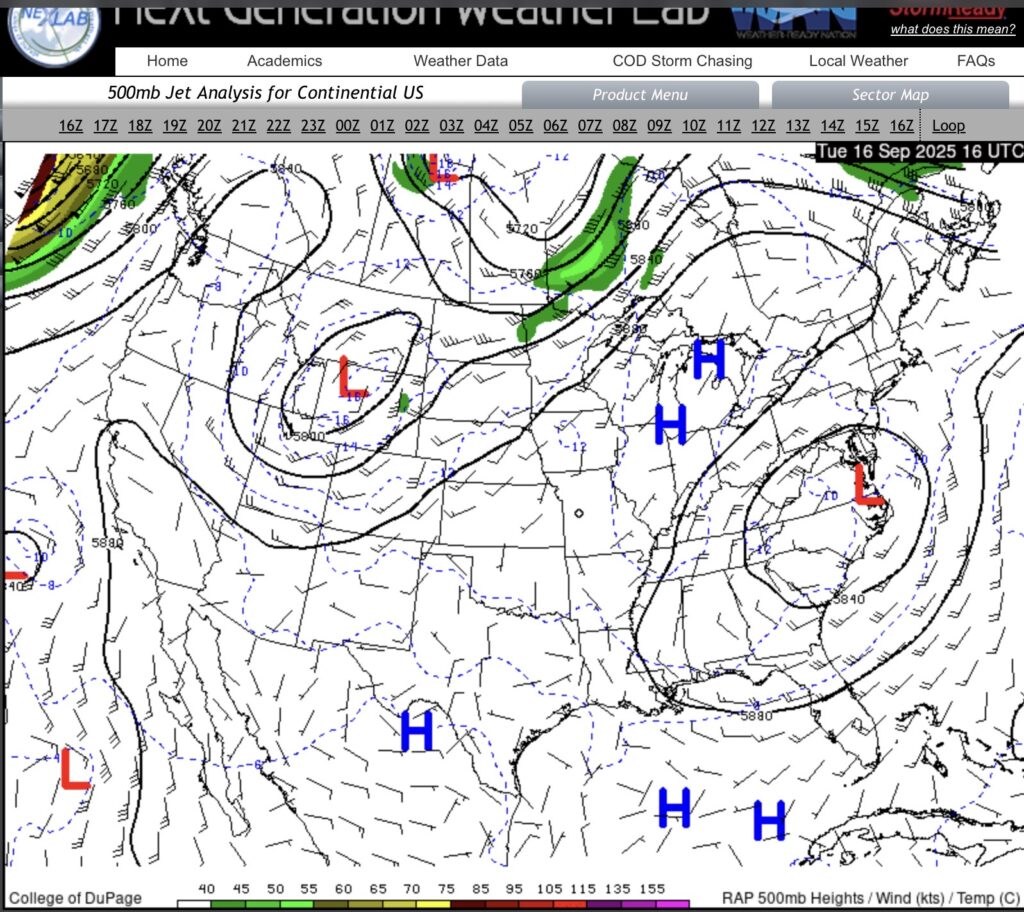
The cold front out to the west is aligned with the jet stream in the Northern Plains, and back into the Rockies. the Upper level low over Virginia, and the surface low are almost stacked up (will it occlude?) So heavy rain is possible in Eastern North Carolina and the Virginia Capes.

High pressure is over the Upper Great Lakes, and South Texas.

The satellite of the country outlines all of the systems as well. With most of the clouds under the upper lows.

On the tropical scene, Invest 92L is looking quite healthy (see satellite below). The next area of concern has just moved off Africa. It currently isn’t in a good spot for development, but it will move into an area over the next week.
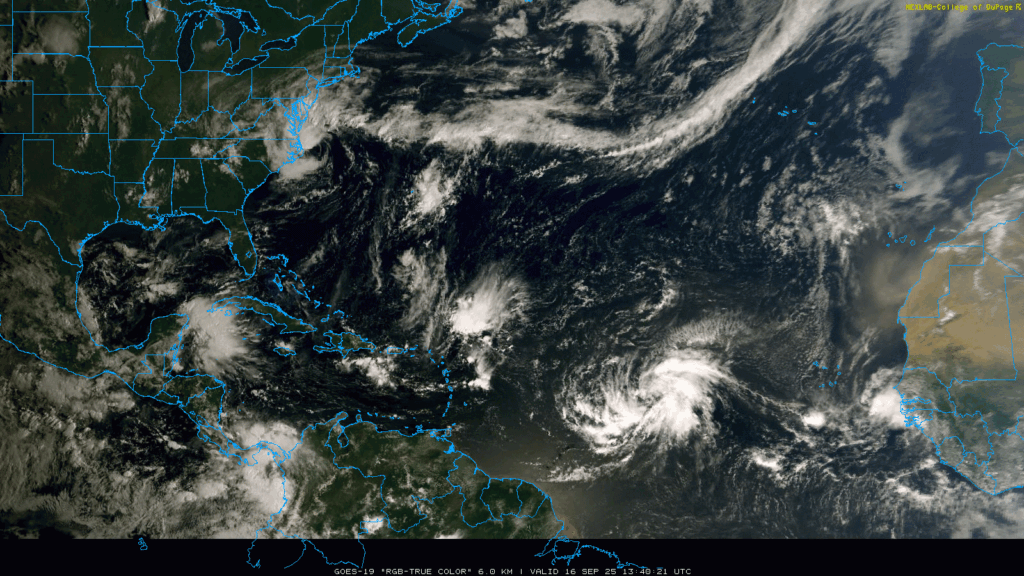



92L (red area) is expected to (90% chance) develop within the next 48 hours. The next wave (yellow area) only has a 20% chance within the next 7 days. So far the models have the first system recurving before Bermuda. It is too early to tell about the next wave, yet.
Looks like Lower Michigan should see the sky cloud up by the end of the week, but the chances of precipitation remain low (less than 10%) through Saturday. Temperatures will remain in the 80s Today and Wednesday, before the front moves through and cool things into the upper 60s to mid 70s, and gradually back into the mid 70s to mid 80s.
The chances for rain remain at 30% or less through tomorrow (Wednesday 9/17) and mainly along the Coastal Bend, with the best chances in Deep South Texas. It looks like it will remain partly sunny through the weekend, with temperatures will remain in the 90s.
Sorry for disappearing. We have run into an electrical problem with the boat. So between finding marine electricians, and taking the boat out with family (go to our Lutz Getaway page ), celebrating a 5 year old’s birthday, and other things, we have been busy. However, we now have our car for the week or so we will be here.
We did get to see the northern lights last night (go to Instagram or Facebook to see that).
So will do some weather analysis this afternoon, and get back into the swing of things…
Here they are! The Videos for South Texas and Lower Michigan…
Yesterday, I started a new way to do this. I split the forecast into South Texas and Lower Michigan versions. They are both about half the time as the full one, with all of the same information, but fine tuned to the region that they are for. I am also using Google Slides to help with the editing and work flow. That has seemed to help a bit more.
there is another cool down for Lower Michigan, and South Texas will warm up as the rain leaves over the next 24 hours.
This morning I was doing a hand analysis for Lower Michigan and one for South Texas. After doing the Michigan map, I decided to turn on the screen capture, and show the analysis as it happened, for South Texas. This is where the title to the videos come from for “Coffee and a Weather Map with Jeff” comes from. I used to do them live on YouTube, and recorded it and uploaded it to my personal Facebook profile. That was 4 to 5 years ago, while I was messing around learning about how to do live YouTube and Facebook, and how it could help with spreading the word for the NWS offices I’ve worked for.
Now here I am, retired, and still loving the weather. I’m contemplating, doing the Mac Mini live again. The iPad hardware-wise may be able to handle multiple screens and live, but the apps out, and Apple’s iPadOS (18 or 26) won’t let it. In the mean time, I can screen record it. Here’s this morning’s screen recording and the final products for Michigan and South Texas…
